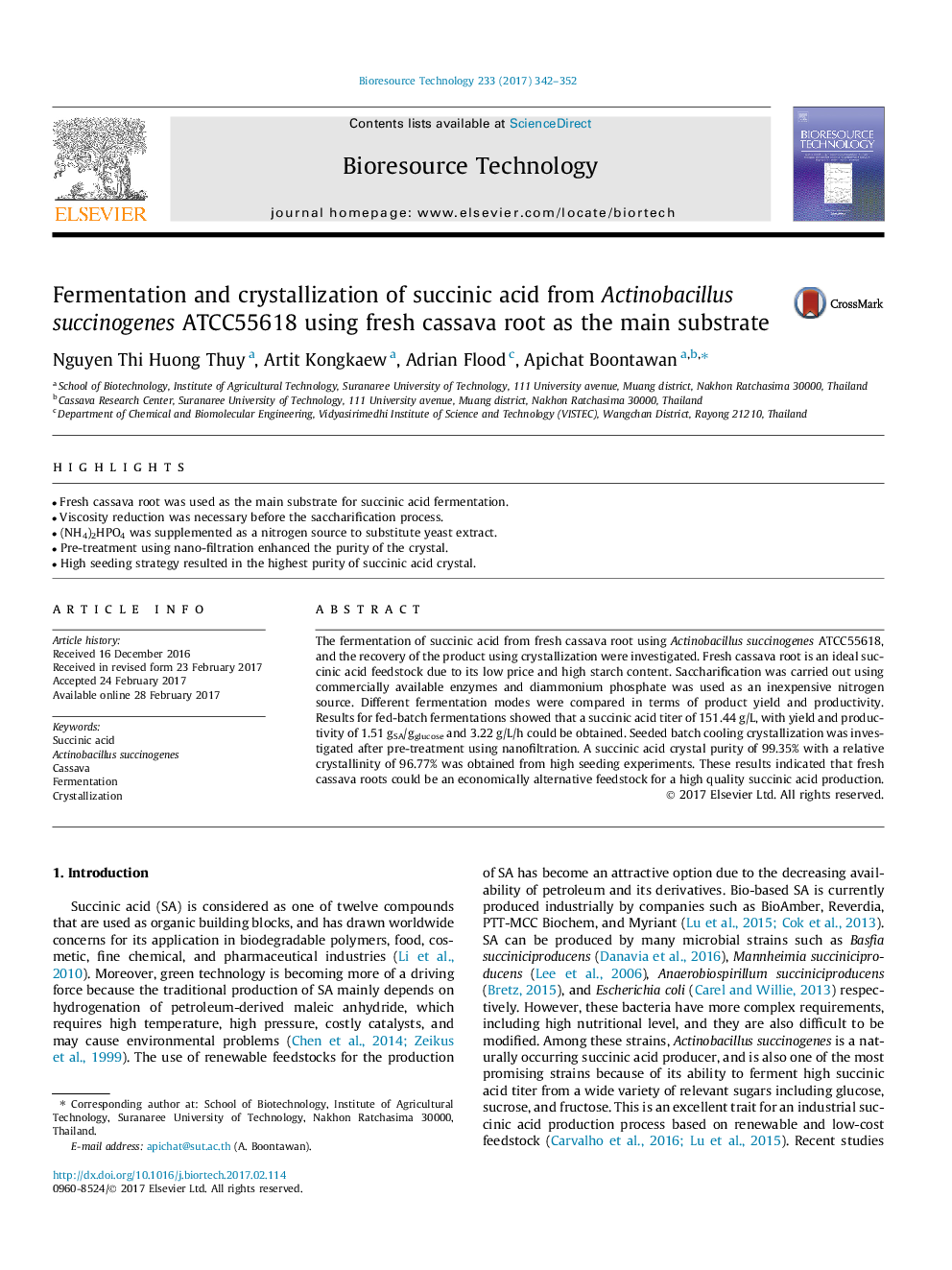| Article ID | Journal | Published Year | Pages | File Type |
|---|---|---|---|---|
| 4997525 | Bioresource Technology | 2017 | 11 Pages |
â¢Fresh cassava root was used as the main substrate for succinic acid fermentation.â¢Viscosity reduction was necessary before the saccharification process.â¢(NH4)2HPO4 was supplemented as a nitrogen source to substitute yeast extract.â¢Pre-treatment using nano-filtration enhanced the purity of the crystal.â¢High seeding strategy resulted in the highest purity of succinic acid crystal.
The fermentation of succinic acid from fresh cassava root using Actinobacillus succinogenes ATCC55618, and the recovery of the product using crystallization were investigated. Fresh cassava root is an ideal succinic acid feedstock due to its low price and high starch content. Saccharification was carried out using commercially available enzymes and diammonium phosphate was used as an inexpensive nitrogen source. Different fermentation modes were compared in terms of product yield and productivity. Results for fed-batch fermentations showed that a succinic acid titer of 151.44Â g/L, with yield and productivity of 1.51Â gSA/gglucose and 3.22Â g/L/h could be obtained. Seeded batch cooling crystallization was investigated after pre-treatment using nanofiltration. A succinic acid crystal purity of 99.35% with a relative crystallinity of 96.77% was obtained from high seeding experiments. These results indicated that fresh cassava roots could be an economically alternative feedstock for a high quality succinic acid production.
